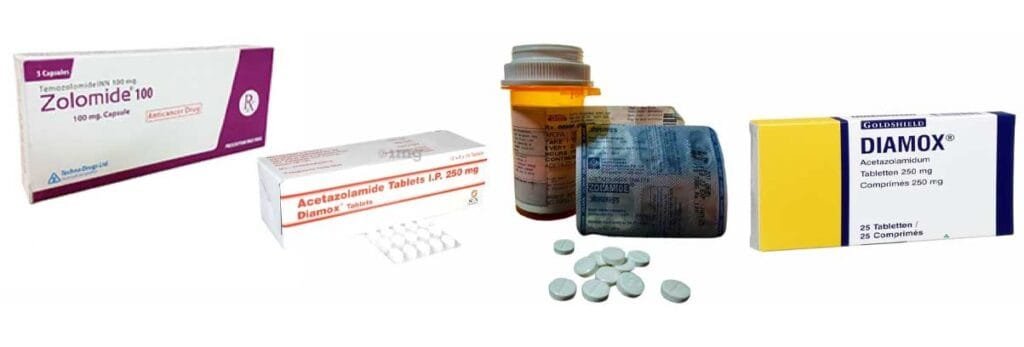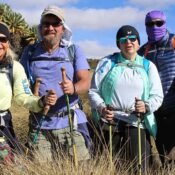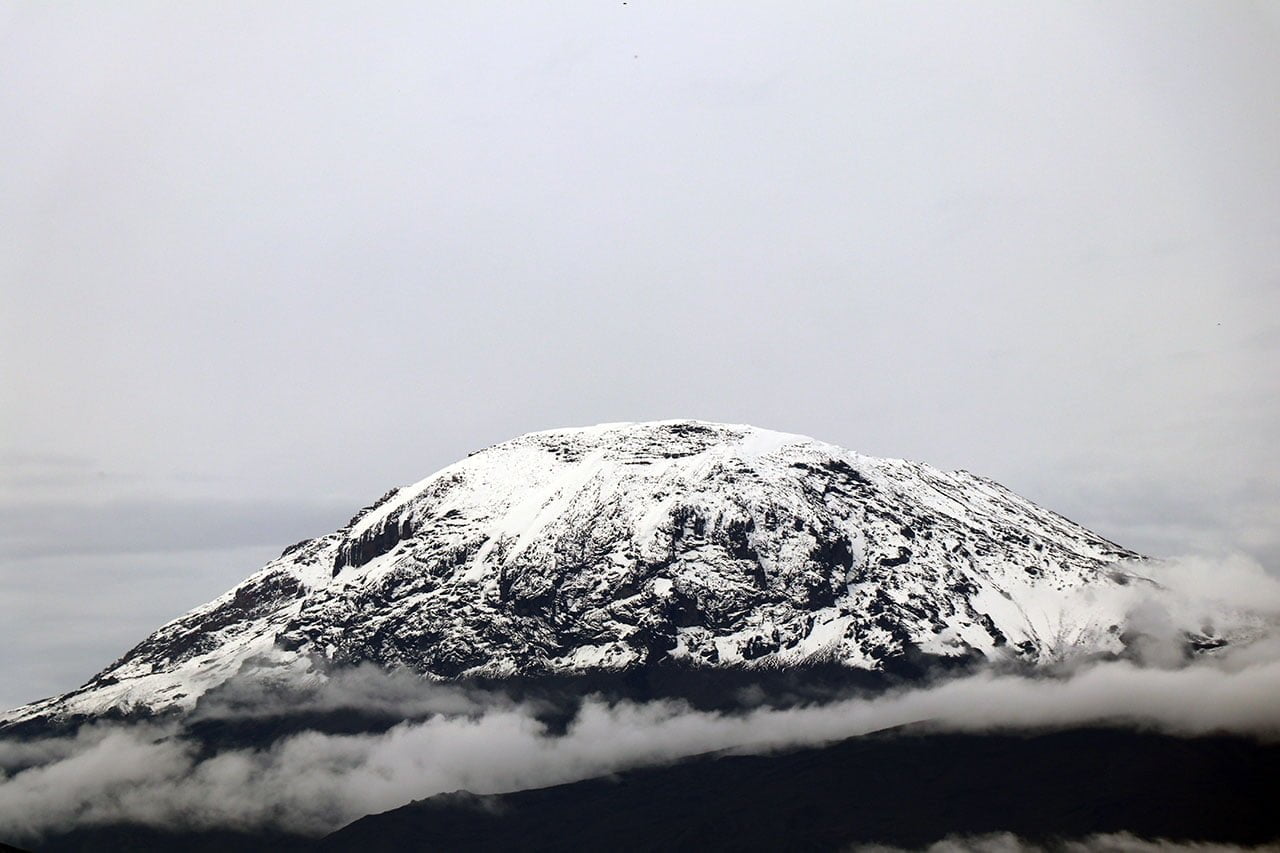Diamox on Kilimanjaro
Do you need to Diamox to Climb Kilimanjaro
Dosage of Diamox on Kilimanjaro: The Wilderness Medical Society recommends 125mg twice a day, beginning two days before the commencement of your climb. Dr. Peter Hackett from the Institute for Altitude Medicine agrees. Anecdotal research suggests that in some people, a dosage of half this quantity works as a prophylactic. (Ask your doctor if Diamox is suitable for you during your medical checkup.)
With your doctor’s approval, we recommend taking Diamox for 2-4 days as a ‘trial run’ to check whether you have any adverse effects a few weeks before your trip to Kilimanjaro. This way, if you do get negative effects from the drug, they will not be misconstrued for altitude sickness.
Diamox for prophylaxis is strongly advised. If you are not allergic to Diamox, we recommend taking 125 mg in the morning before beginning your Kilimanjaro climb, followed by 125 mg twice a day, afternoon and morning, during the expedition.
Kilimanjaro’s peak, at 19,341 feet above sea level, is classified as “extreme altitude”. Uhuru Peak is not Everest, hence no supplementary oxygen is required to climb it safely.
However, altitude sickness and altitude-related difficulties are the most common reasons why a climber fails to summit or must turn back. Altitude sickness may affect even the fittest of hikers, and while the ideal method to acclimate is to go slowly, allowing your body time to adjust, there is a medicine called Diamox that can aid in the process.
Disclaimer: Nothing in this page, or the information it contains, is intended to diagnose, treat, prevent, or cure any ailment. Please consult your healthcare expert before implementing any of the advice in this article.

What is Diamox?
Acetazolamide, often known as Diamox, is a medicine that is primarily used to treat glaucoma, edema (due to drug usage or heart failure), and some types of epilepsy.
It is extensively utilized in the climbing community to speed up acclimatization as part of a well-planned ascent.
It is a prescription-only oral drug, and you should consult with your doctor about whether it is good for you. If you have pre-existing diseases, such as kidney or liver problems, it may not be appropriate.
According to the Wilderness Medical Society, Diamox can considerably minimize the onset and severity of altitude sickness by accelerating the body’s adaption mechanisms. Several studies have established that trekkers who take modest doses of Diamox in combination with a proper acclimatization program are less likely to get mountain sickness, and if they do, it is generally milder.
Diamox is used as a precaution (prophylaxis) and does not treat altitude sickness.
How does Diamox work?
Acetazolamide, a sulfonamide drug, causes the kidneys to excrete bicarbonate. This activity re-acidifies the blood (causing the body to assume there is a buildup of carbon dioxide), acting as a respiratory stimulant. The diuretic action causes more urine, and the breathing stimulation can typically assist in alleviating the periodic breathing pattern during the night.
If you take Diamox, you will breathe deeper and urinate more often.
Side Effects & Interactions of Diamox
Climbers commonly experience the following adverse effects:
Increased urination. Trekkers using Diamox should be aware of this and stay hydrated to balance the diuretic's effects.
Strange taste sensations. In certain people, it might change the flavor of particular meals or drinks.
Tingling or numbness in the extremities, particularly the hands, feet, and face.
Nausea and gastrointestinal disturbance, dizziness, and confusion: this is not frequent, but that's why most trekkers take a trial dosage of Diamox before their ascent to rule it out.Diamox may interfere with other drugs you are taking. WebMD suggests checking the labels of any prescription and non-prescription medications for interactions with your doctor.
Dosage of Diamox on Kilimanjaro
The Wilderness Medical Society recommends taking 125mg twice day beginning two days before the commencement of your Kilimanjaro climb. Anecdotal research suggests that in some people, a dosage of half this quantity works as a prophylactic.
It is very advised to take Diamox for prophylaxis. If you are not allergic to Diamox, the suggested starting dose is 125 mg in the morning before beginning your Kilimanjaro climb, followed by 125 mg twice daily in the afternoon and morning during the expedition.
Myths About Diamox
There are various stories that go round about the use of Diamox, some of which are just myths, here are some common ones you might come across:
Myth: Diamox masks the symptoms of altitude sickness
Reality: It doesn’t. It speeds up your body’s natural system for acclimatization. If you are actually sick, you will still have symptoms.
Myth: If you take Diamox, you won’t get altitude sickness.
Reality: You can still get altitude sickness even when you take Diamox. It helps you acclimatize, it doesn’t inoculate you against AMS.
Myth: Diamox will prevent AMS from getting worse as you climb
Reality: If you have symptoms of AMS, Diamox will not protect you once you have mountain sickness.
Myth: You need Diamox to summit Kilimanjaro
Reality: you don’t. Plenty of climbers summit Kilimanjaro comfortably and safely without it.
Myth: Taking Diamox to help acclimatize is “cheating”
Reality: It helps speed up the natural acclimatization process. You’ve come all this way, and you want to give yourself the best chance of a successful summit.
Myth: If you stop taking Diamox, symptoms will get worse
Reality: If you stop taking Diamox during your climb, your acclimatization will revert to the body’s natural rate, stopping Diamox won’t slow it down or make you ill.
Is Diamox Right for YOU?
Only your doctor can answer that question. If you are allergic to sulfa drugs, no. It is up to you whether or not to take it; some individuals are highly opposed to taking needless medication. It is absolutely not required; some prefer to utilize every tool in the box to assist with the elevation. There is no right or incorrect answer; it is a personal decision. (Obviously, your doctor’s choice).
Discuss Diamox with your doctor during your next medical checkup.
With your doctor’s approval, we recommend taking Diamox for 2-4 days as a ‘trial run’ to check whether you have any adverse effects a few weeks before your trip to Kilimanjaro. This way, if you do get negative effects from the drug, they will not be misconstrued as altitude sickness.
Alternatives to help Acclimatization
Every day we see different so-called ‘natural’ remedies springing up that claim to cure everything from cancer to hair loss. It’s no different with mountain sickness. Untested products spring up from time to time making exaggerated claims.
The only medication with consistent results from rigorous testing is Diamox.
There are a few common ones:
- Gingko Biloba: results with this seem to be very conflicting. Some studies have shown a possible beneficial effect, others have dismissed it. You can read a selection of the studies here
- Coca leaves: used widely in South American countries, it’s believed that coca leaves can alleviate AMS. The studies have mostly shown correlation rather than causation.
- Beetroot: beetroot juice is used widely amongst some athletes because it’s a source of dietary nitrite which is involved in blood flow. It has not been studied widely for use in AMS prevention.
- Garlic: some anecdotal evidence claims that large quantities of garlic can increase blood flow and help acclimatization. We know of no formal studies to suggest this, but it probably does no harm.
A Note about Ibuprofen
For minor pain relief on the mountain, ibuprofen is normally recommended as narcotic pain medications can result in slower breathing and can cause problems at altitude. If you are on pain medication for any reason, speak to your doctor.
If you have a headache whilst climbing, it’s important to speak to your guide before you take ibuprofen. A mild headache can be a very early signal of altitude sickness, and you don’t want to mask this and risk it worsening.
A Note about Malarone and Malaria On Kilimanjaro
As with most of Africa, malaria is always a concern when traveling through Tanzania. As the mosquitos are generally not found above 6000ft, you are relatively safe whilst on the mountain. However, you need to consider that you’ll be Moshi or Arusha before and after your climb, which is when you are most at risk.
Malaria is a parasite transmitted through the bite of the female anopheles mosquito. It only takes one bite to be infected, and the illness is serious, sometimes fatal.
Consult your doctor about antimalarial prophylaxis and which is best for you and your destination. Malarone is a popular but pricey medication that has the fewest documented negative effects. To learn more, visit the Hospital for Tropical Diseases.
A word of caution concerning Larium: this anti-malarial has been observed to have adverse effects similar to those of altitude sickness.
Taking prophylaxis (antimalarials) does not ensure that you will not develop malaria. Taking care to avoid being bitten is the only surefire approach to prevent it.
- Staying indoors between dusk and dawn (the mosquitoes are most active in the evenings)
- Wearing a strong mosquito repellent, preferably with DEET
- Always use a mosquito net over your bed when you sleep
- Spray your room with insect repellent, and treat clothes and bedding
- Wear long sleeves, trousers, and socks in the evenings
- Avoid densely populated areas, especially at night
Remember:
Slow down and give your body time to adapt. Take a lengthy way, and don’t rush on the trek.
Drink lots of water, especially if you’re doing Diamox.
Inform your guide right away if you feel sick, have a headache, nausea, or any other symptom.
Questions? We’re here to assist. If you need assistance picking a route or arranging your Tanzanian experience, please contact us.





